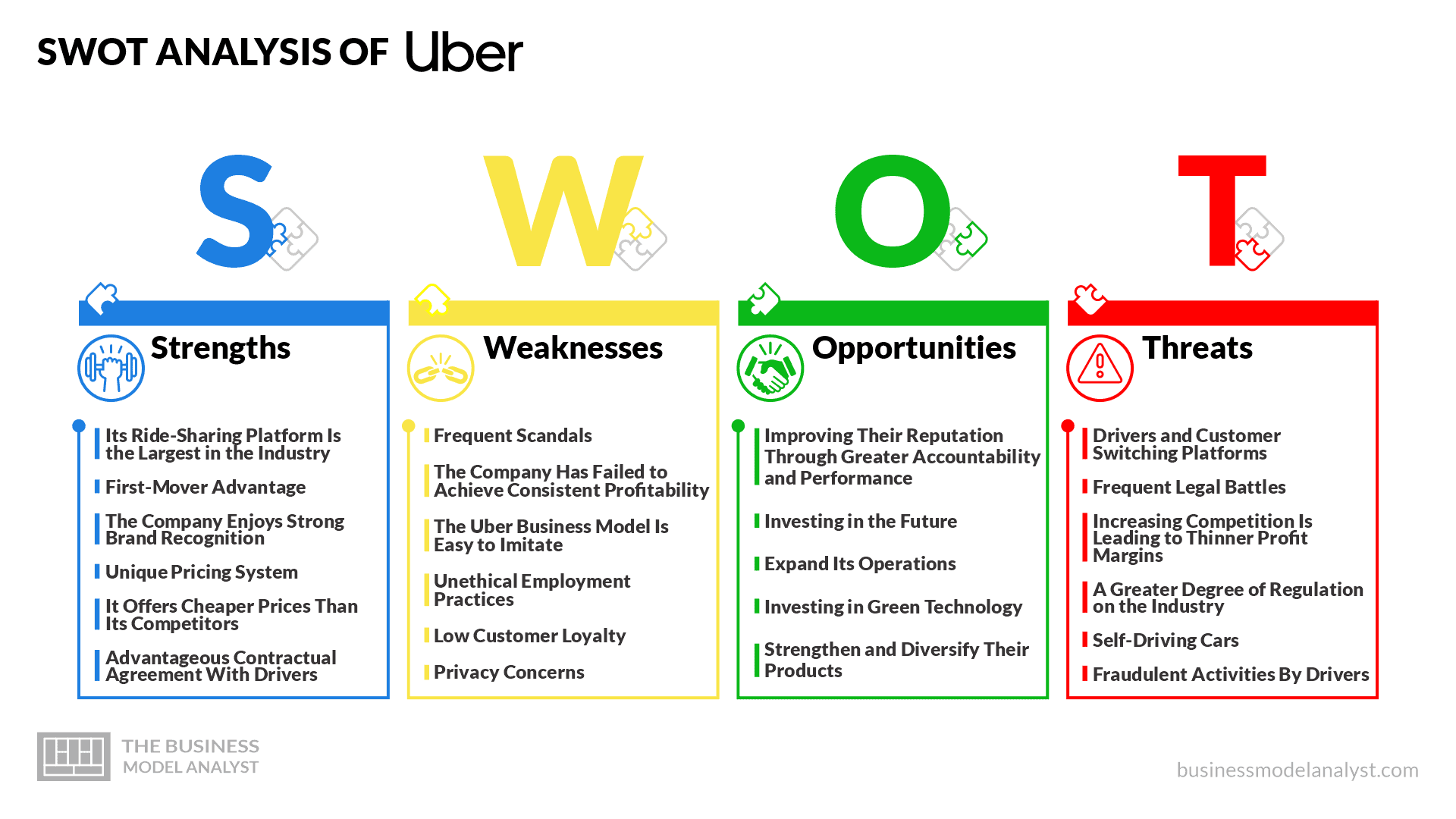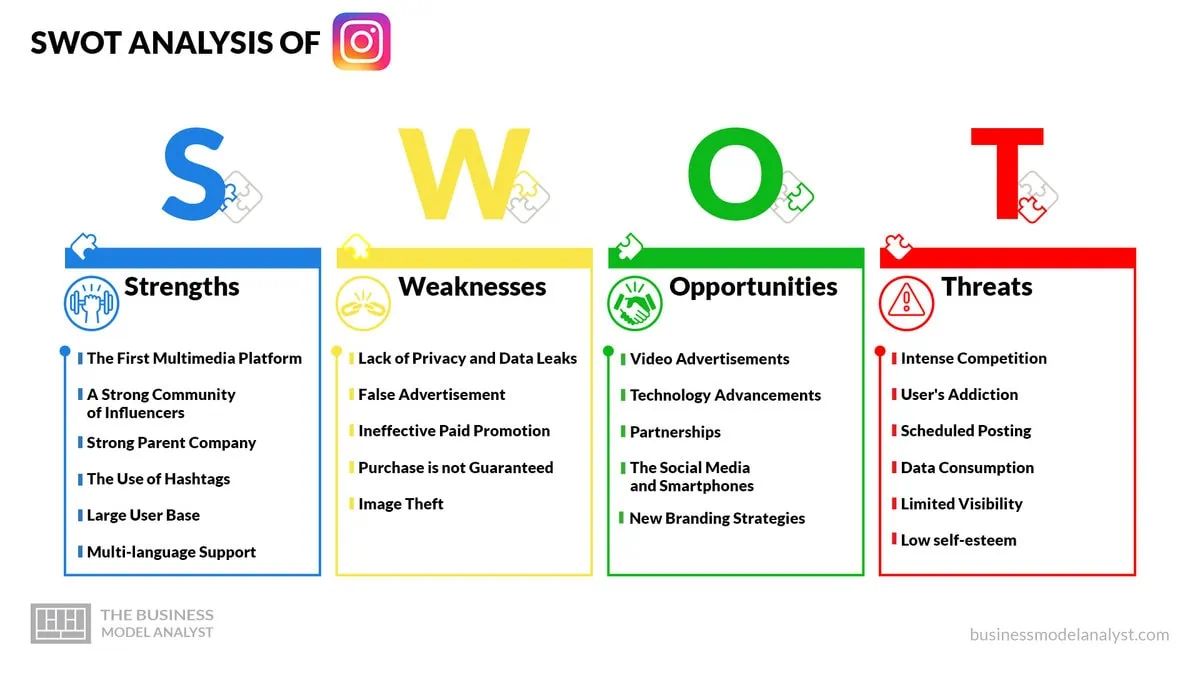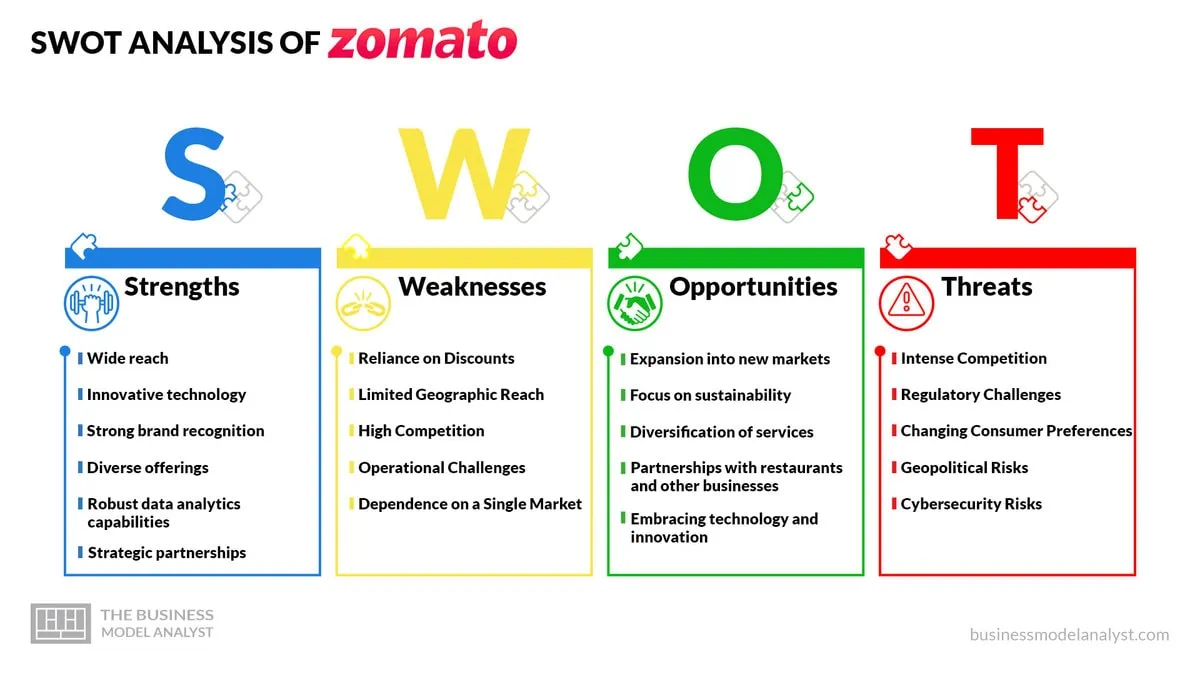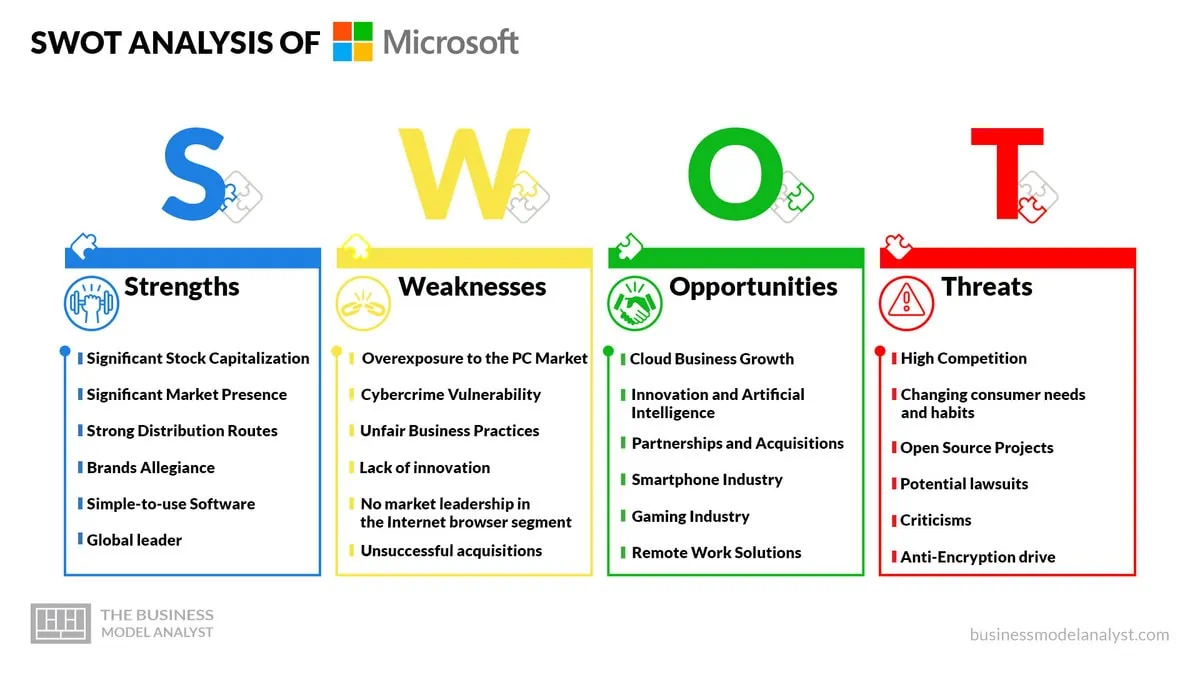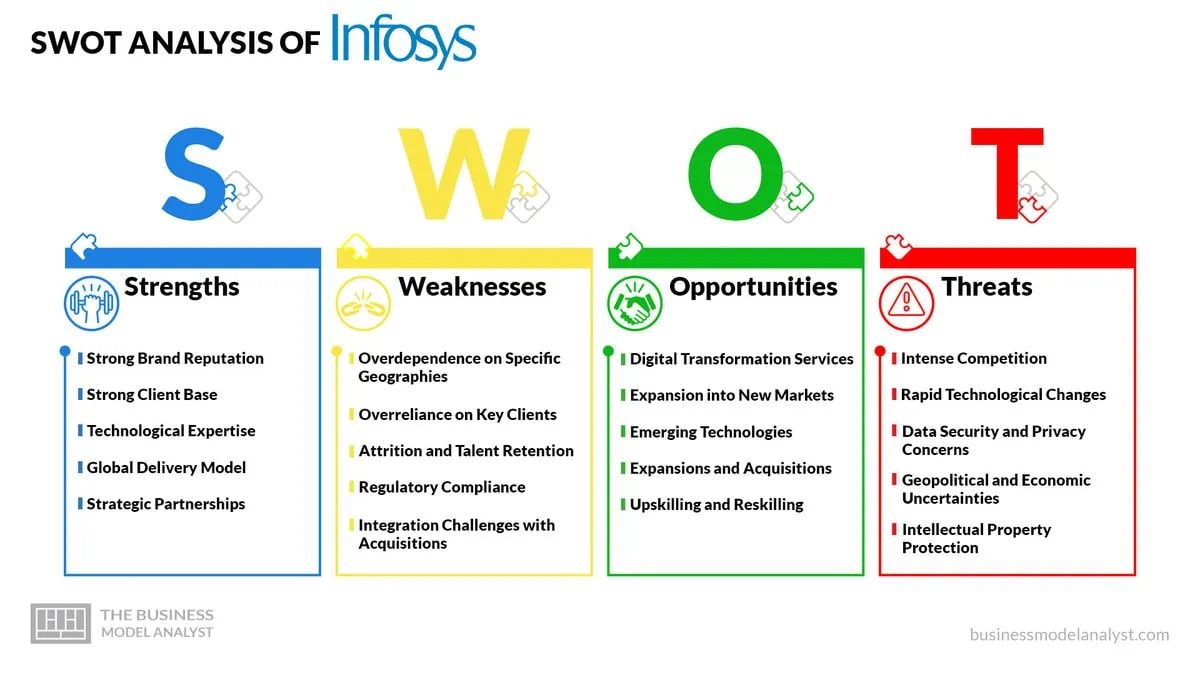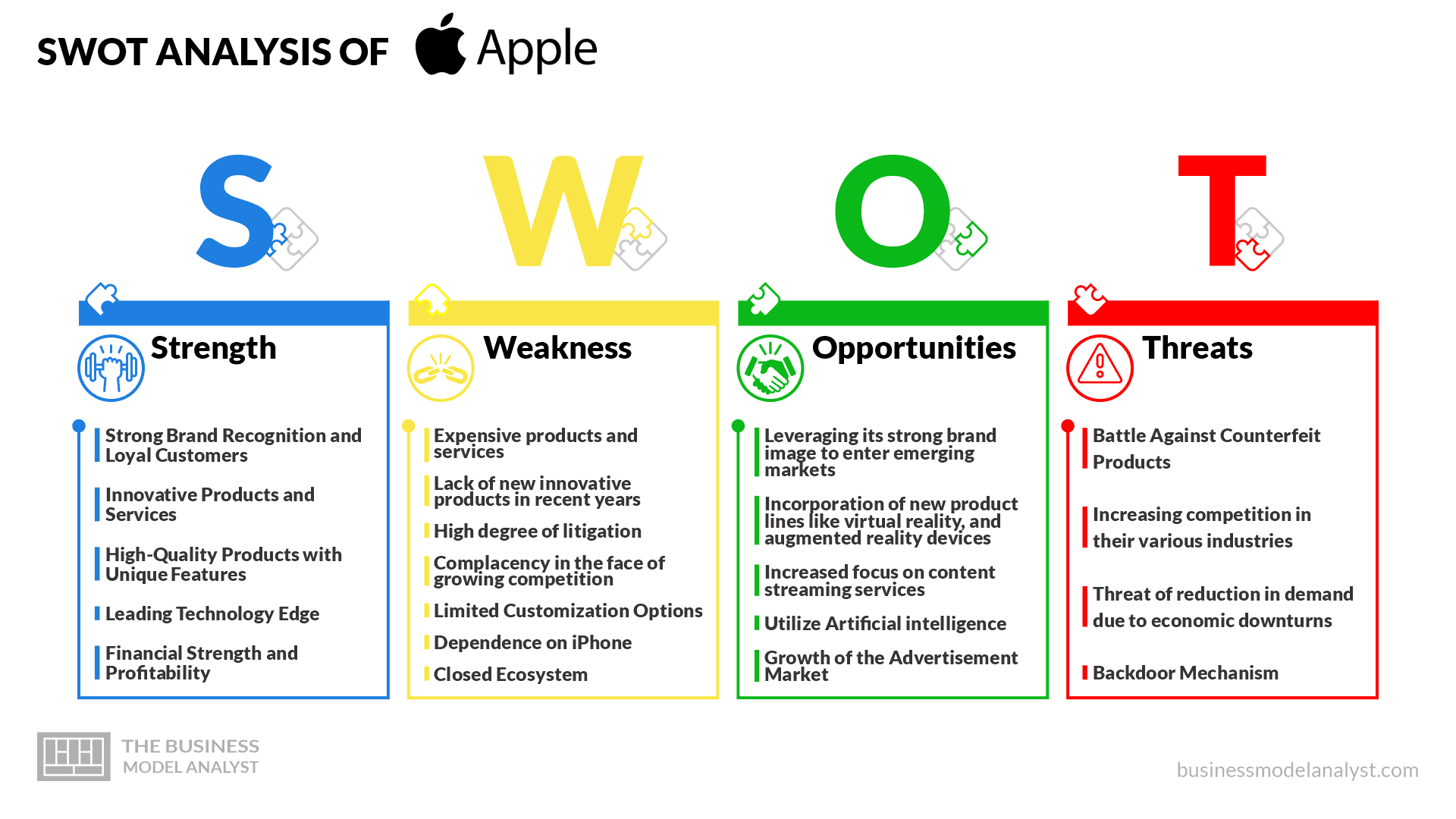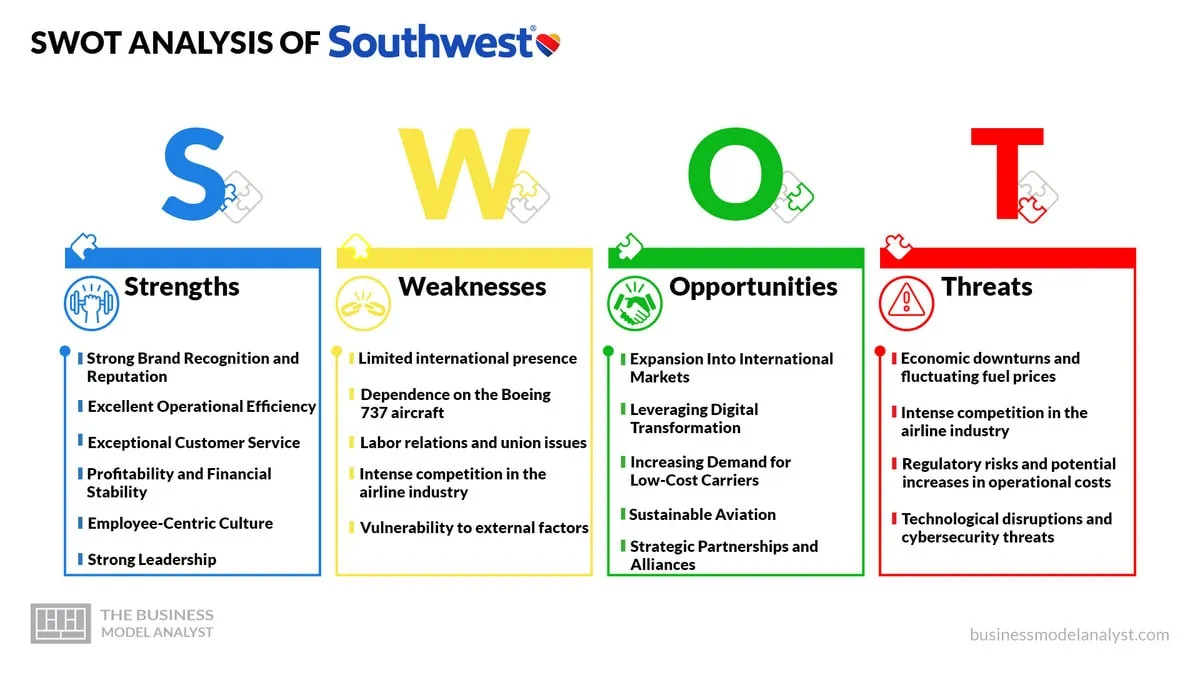Lululemon SWOT Analysis
With its rapid expansion and loyal customer base, Lululemon has emerged as a critical player in the fitness and wellness industry, offering highly respected athletic apparel. Founded in 1998, the company has become synonymous with high-quality, stylish activewear that seamlessly combines fashion and functionality.
But like any company, it faces its fair share of strengths, weaknesses, opportunities, and threats. In this Lululemon SWOT analysis, we will analyze the internal and external factors that shape the company’s performance.
By examining these aspects, valuable insights can be gained that enable informed decisions and stay ahead of the industry’s competition. A comprehensive understanding of Lululemon’s position in the market is crucial for stakeholders, from business owners looking to learn from its success to investors evaluating its growth potential.
Contents
Lululemon Strengths
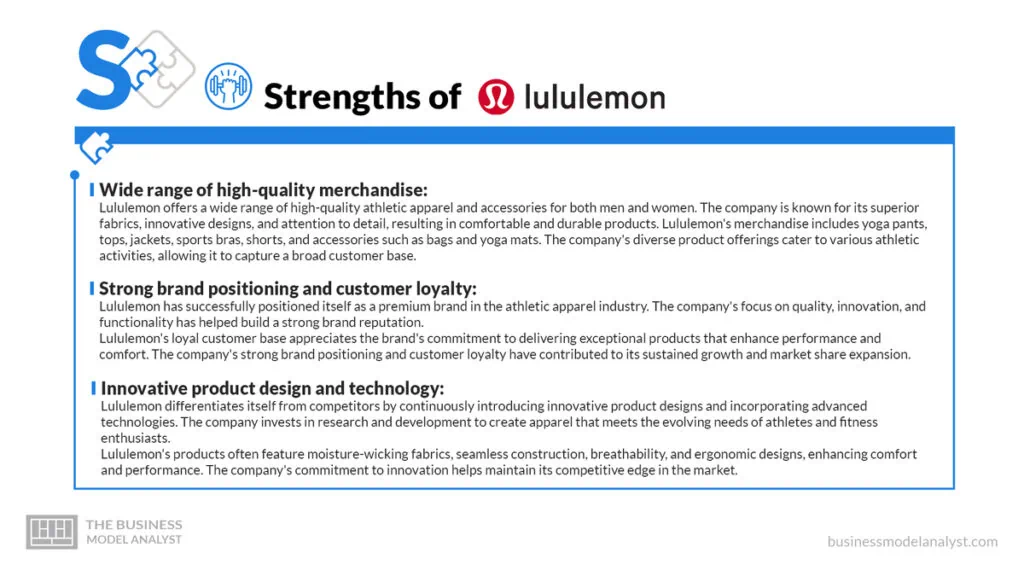
Lululemon boasts a range of strengths that have propelled it to the forefront of the industry.
Wide range of high-quality merchandise
Lululemon offers a wide range of high-quality athletic apparel and accessories for both men and women. The company is known for its superior fabrics, innovative designs, and attention to detail, resulting in comfortable and durable products. Lululemon’s merchandise includes yoga pants, tops, jackets, sports bras, shorts, and accessories such as bags and yoga mats. The company’s diverse product offerings cater to various athletic activities, allowing it to capture a broad customer base.
Strong brand positioning and customer loyalty
Lululemon has successfully positioned itself as a premium brand in the athletic apparel industry. The company’s focus on quality, innovation, and functionality has helped build a strong brand reputation.
Lululemon’s loyal customer base appreciates the brand’s commitment to delivering exceptional products that enhance performance and comfort. The company’s strong brand positioning and customer loyalty have contributed to its sustained growth and market share expansion.
Innovative product design and technology
Lululemon differentiates itself from competitors by continuously introducing innovative product designs and incorporating advanced technologies. The company invests in research and development to create apparel that meets the evolving needs of athletes and fitness enthusiasts.
Lululemon’s products often feature moisture-wicking fabrics, seamless construction, breathability, and ergonomic designs, enhancing comfort and performance. The company’s commitment to innovation helps maintain its competitive edge in the market.
Robust retail store and online presence
Lululemon operates a robust retail network that includes company-owned stores and e-commerce channels. The company has a significant presence in North America, Europe, Asia, and other regions, allowing it to serve a global customer base. Lululemon’s retail stores provide a unique and personalized shopping experience, allowing customers to try on and experience the fit and quality of its products before making a purchase.
In addition, the company’s user-friendly and seamless online platform enables customers to shop conveniently from anywhere. Lululemon’s solid retail store and online presence contribute to its market dominance and customer engagement.
Strong social media and influencer partnerships
Lululemon has established a strong presence on various social media platforms, including Instagram, Facebook, and Twitter. The company effectively utilizes these platforms to engage with its customers, share product information, and promote its brand values and initiatives.
Lululemon’s social media presence helps create a sense of community among its customers, fostering brand loyalty and advocacy. Additionally, the company leverages influencer partnerships to reach a wider audience and enhance brand visibility.
Commitment to sustainability
Lululemon prioritizes sustainability and corporate social responsibility. The company has set ambitious goals to reduce its environmental impact, including using recycled materials, reducing water consumption, and implementing ethical sourcing practices.
Lululemon also actively supports community initiatives and encourages employee volunteering. Its commitment to sustainability resonates with customers who value environmentally conscious brands and contributes to its positive brand image.
Strong financial performance
Lululemon has consistently demonstrated strong financial performance, with steady revenue growth and healthy profit margins. The company’s ability to effectively manage costs while delivering high-quality products has contributed to its economic success.
Lululemon’s strong financial position provides it with the resources and flexibility to invest in growth initiatives, such as expanding its global footprint, developing new product lines, and enhancing its digital capabilities.
Lululemon Weaknesses
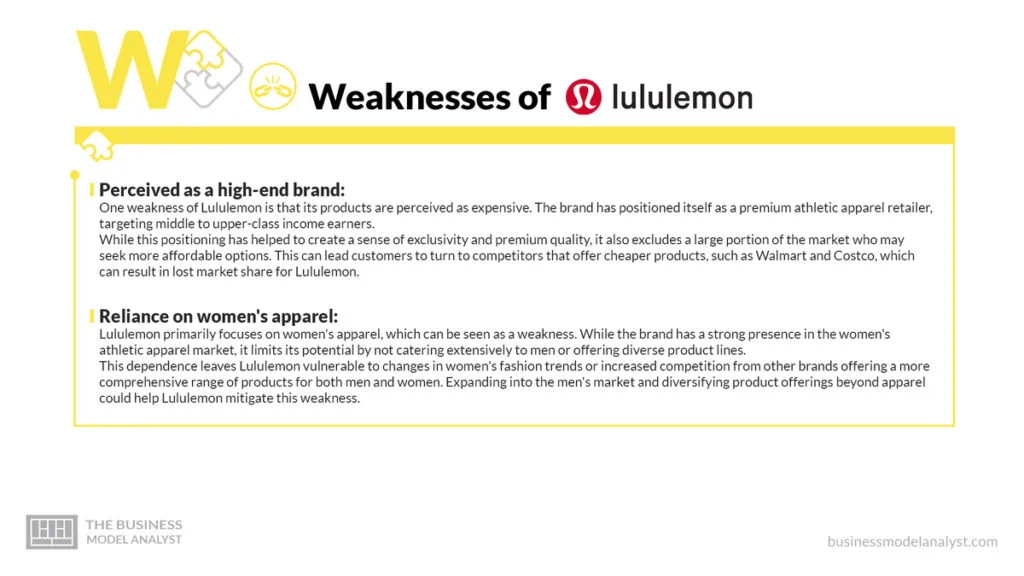
Despite its success in the athletic apparel market, Lululemon, like any company, has its share of weaknesses. These weaknesses highlight areas where the brand may face challenges or limitations that could impact its growth, profitability, and market reach.
Perceived as a high-end brand
One weakness of Lululemon is that its products are perceived as expensive. The brand has positioned itself as a premium athletic apparel retailer, targeting middle to upper-class income earners.
While this positioning has helped to create a sense of exclusivity and premium quality, it also excludes a large portion of the market who may seek more affordable options. This can lead customers to turn to competitors that offer cheaper products, such as Walmart and Costco, which can result in lost market share for Lululemon.
Reliance on women’s apparel
Lululemon primarily focuses on women’s apparel, which can be seen as a weakness. While the brand has a strong presence in the women’s athletic apparel market, it limits its potential by not catering extensively to men or offering diverse product lines.
This dependence leaves Lululemon vulnerable to changes in women’s fashion trends or increased competition from other brands offering a more comprehensive range of products for both men and women. Expanding into the men’s market and diversifying product offerings beyond apparel could help Lululemon mitigate this weakness.
Limited international presence
Despite its success in the North American market, Lululemon has a limited international presence, a weakness. The brand has primarily focused on expanding within the United States and Canada, leaving opportunities in other countries untapped.
This limitation prevents Lululemon from capitalizing on the growing demand for athletic apparel in international markets. The brand’s lack of global presence also makes it more susceptible to economic fluctuations or changes in consumer preferences in a specific region, affecting its overall growth potential.
Limited product diversification
Lululemon’s product line primarily focuses on athletic apparel, which can be seen as a weakness. While the brand offers a range of yoga pants, leggings, and sports bras, it needs more diversity in terms of product categories.
This limits its ability to cater to customers’ evolving needs and preferences and capitalize on market trends outside the athletic apparel segment. By expanding its product line to include accessories, footwear, and other athleisure categories, Lululemon could enhance customer loyalty and capture a broader customer base.
Reliance on brick-and-mortar stores
Lululemon’s reliance on brick-and-mortar stores is a weakness, especially in the age of e-commerce growth. While the brand has seen success with its physical retail stores, the shift towards online shopping poses a challenge.
The COVID-19 pandemic highlighted the importance of digital channels, and brands with a solid online presence have gained a competitive advantage. Lululemon needs to invest further in its e-commerce capabilities to reach a wider audience and remain competitive in the rapidly evolving retail landscape.
Potential supply chain vulnerabilities
Lululemon’s reliance on global supply chains for manufacturing and sourcing materials exposes the company to potential vulnerabilities. Any disruptions or delays in the supply chain can impact the brand’s ability to meet customer demand or deliver products on time.
Natural disasters, political instability, trade disputes, or logistics challenges can significantly affect Lululemon’s operations and profitability. Implementing effective supply chain risk management strategies and diversifying sourcing options can help mitigate these weaknesses and ensure a more resilient supply chain.
Lululemon Opportunities
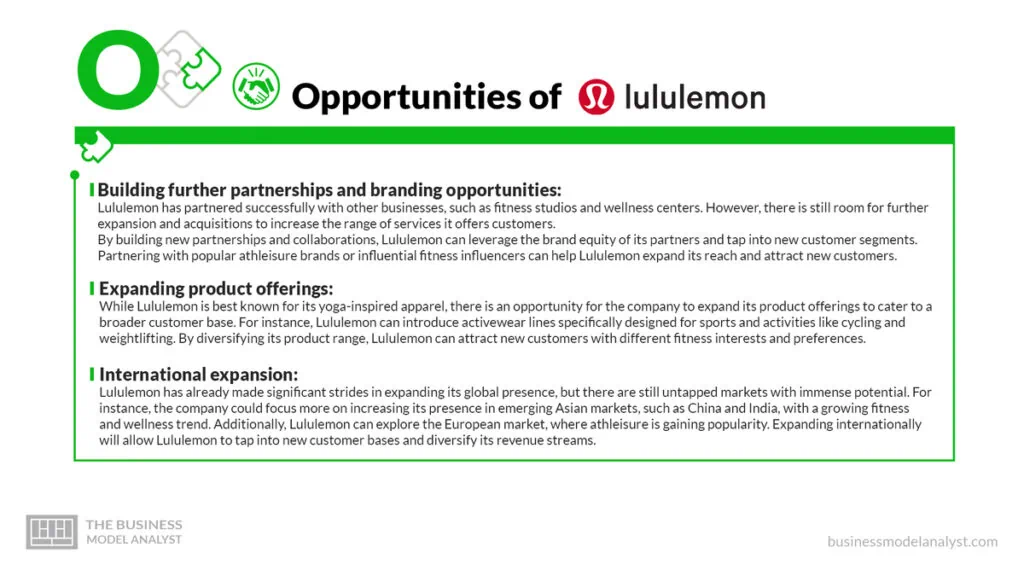
While the company has achieved remarkable success in recent years, numerous opportunities can still drive further growth and solidify its position as a leader in the industry.
Building further partnerships and branding opportunities
Lululemon has partnered successfully with other businesses, such as fitness studios and wellness centers. However, there is still room for further expansion and acquisitions to increase the range of services it offers customers.
By building new partnerships and collaborations, Lululemon can leverage the brand equity of its partners and tap into new customer segments. Partnering with popular athleisure brands or influential fitness influencers can help Lululemon expand its reach and attract new customers.
Expanding product offerings
While Lululemon is best known for its yoga-inspired apparel, there is an opportunity for the company to expand its product offerings to cater to a broader customer base. For instance, Lululemon can introduce activewear lines specifically designed for sports and activities like cycling and weightlifting. By diversifying its product range, Lululemon can attract new customers with different fitness interests and preferences.
International expansion
Lululemon has already made significant strides in expanding its global presence, but there are still untapped markets with immense potential. For instance, the company could focus more on increasing its presence in emerging Asian markets, such as China and India, with a growing fitness and wellness trend. Additionally, Lululemon can explore the European market, where athleisure is gaining popularity. Expanding internationally will allow Lululemon to tap into new customer bases and diversify its revenue streams.
Enhancing online presence and e-commerce capabilities
While Lululemon has a robust online presence, there is room for further growth and improvement. The company should invest in enhancing its e-commerce capabilities, such as improving website functionality, optimizing mobile shopping experience, and expanding online product assortments.
Additionally, Lululemon can leverage data analytics and personalized marketing to create a more personalized and tailored online shopping experience for its customers. By improving its online presence, Lululemon can reach a broader customer base and increase its online sales.
Focus on sustainability and eco-friendly initiatives
As consumers become more environmentally conscious, there is a growing demand for sustainable products. Lululemon has already taken steps towards sustainability, such as launching a recycled material collection and reducing its carbon footprint. However, the company has an opportunity to strengthen its commitment to sustainability further.
For example, Lululemon can explore innovative eco-friendly materials for its activewear, invest in renewable energy sources for its operations, and promote recycling and waste reduction initiatives. By positioning itself as a sustainable brand, Lululemon can attract environmentally conscious consumers and differentiate itself from competitors.
Expanding into menswear
Lululemon has seen limited success in its men’s activewear category, and there is an opportunity for further expansion in this segment. The athleisure trend is not limited to women, and there is a growing demand for stylish and functional activewear for men.
Lululemon can diversify its menswear offerings by introducing new product lines tailored to the needs and preferences of male customers. By expanding into menswear, Lululemon can tap into a new customer base and increase its market share in the growing men’s activewear market.
Leveraging data analytics and artificial intelligence
Lululemon can harness the power of data analytics and artificial intelligence to gain valuable insights into customer behavior, preferences, and trends. By analyzing customer data, Lululemon can tailor its marketing strategies, product offerings, and customer experiences to meet its target audience’s needs better.
In addition, artificial intelligence can enhance inventory management, optimize pricing strategies, and improve supply chain efficiency. By leveraging data analytics and artificial intelligence, Lululemon can make data-driven decisions and stay ahead of the competition in a rapidly evolving market.
Expanding the loyalty program
Lululemon’s loyalty program, known as “Sweat Collective,” is already popular among its customers. However, there is an opportunity to expand and enhance the loyalty program to increase customer engagement and retention. Lululemon can offer exclusive rewards, personalized offers, and unique experiences to its loyalty program members.
Additionally, the company can explore partnerships with other businesses to provide additional benefits and rewards to loyalty program members. By expanding the loyalty program, Lululemon can strengthen customer loyalty and create a community of brand advocates.
Lululemon Threats

Despite its success and strong brand recognition, Lululemon operates in a dynamic market where emerging trends, intense competition, and external factors can challenge its growth and profitability.
From increasing competition from athletic apparel brands and retailers to evolving consumer preferences, e-commerce dominance, supply chain disruptions, and negative publicity, Lululemon must navigate these potential threats strategically to maintain its market share and continue its success.
Intensifying competition from athletic apparel brands and retailers
Lululemon operates in a highly competitive market, facing competition from established athletic apparel brands and emerging startups. Companies like Nike, Adidas, Under Armour, and Athleta are significant competitors with strong brand recognition and established customer bases.
These competitors offer similar products and have a loyal customer following, which challenges Lululemon’s market share and profitability. Additionally, traditional retailers like Target and Walmart have expanded their athleisure offerings, providing more options for customers and increasing competition further.
Rapidly changing consumer preferences and trends
The athletic apparel industry is highly influenced by changing consumer preferences, fashion trends, and lifestyle choices. If Lululemon fails to anticipate and react to these changes, it may lose its appeal to its target market.
For example, consumer preferences may shift towards sustainable or eco-friendly clothing, putting pressure on Lululemon to source and produce garments using environmentally conscious materials and processes. Failure to adapt to evolving trends may decrease customer engagement and market share.
E-commerce and online retail competition
The rise of e-commerce and online retail has transformed the retail landscape, including the athletic apparel industry. Companies like Amazon have a significant online presence and leverage their vast customer base and logistical capabilities, posing a threat to Lululemon’s online sales.
Furthermore, brick-and-mortar retailers have invested heavily in their online platforms, which provide customers with convenient shopping experiences and potentially diminish foot traffic to Lululemon’s physical stores.
Supply chain disruptions and sourcing challenges
Lululemon relies on global supply chains to source and manufacture its products. Disruptions in these supply chains, such as natural disasters, trade tensions, transportation delays, or labor disputes, can lead to product shortages, delays, and increased costs.
Additionally, sourcing challenges, including finding suppliers that meet Lululemon’s quality standards and sustainability requirements, can affect the availability of materials and impact production. These disruptions and challenges may lead to reputational damage, increased expenses, and loss of market share.
Fluctuating raw material costs
The cost of raw materials, such as cotton, polyester, and spandex, can be volatile due to factors like global market conditions, weather events, and geopolitical tensions. Fluctuating raw material costs can affect Lululemon’s production costs, profit margins, and ability to offer competitive pricing. If the company cannot manage and mitigate these cost fluctuations, it may face challenges in maintaining profitability and competitiveness in the market.
Adverse publicity and social media backlash
In today’s digital age, negative publicity can quickly spread through social media and other online platforms, impacting a company’s reputation and customer perception. Lululemon is not exempt from potential controversies or criticism surrounding product quality, ethical sourcing, or the company’s social initiatives.
Any harmful incidents or social media backlash could result in reputational damage, customer distrust, and decreased sales. Lululemon must proactively address concerns, maintain transparency, and demonstrate its commitment to its customers and values.
Economic downturns and consumer spending habits
Lululemon’s financial performance is susceptible to economic downturns and changes in consumer spending habits. During economic recessions or periods of financial uncertainty, consumers may prioritize essential expenses, reducing discretionary spending on athleisure items.
This could lead to a decline in sales and profit for Lululemon. Additionally, changes in consumer spending habits, such as a shift towards more affordable alternatives or reduced brand loyalty, may impact the company’s market share and profitability.
Counterfeit products and intellectual property infringement
Lululemon’s popularity and strong brand presence make it an attractive target for counterfeiters and entities infringing on its intellectual property. Counterfeit products not only directly threaten Lululemon’s sales and reputation but also impact customer confidence in the authenticity and quality of the brand’s products.
Intellectual property infringement, such as the unauthorized use of Lululemon designs or trademarks, can dilute the brand’s exclusivity and hinder its ability to differentiate itself from competitors. Lululemon must invest in robust measures to protect its intellectual property rights and combat counterfeit products effectively.
Conclusion
The SWOT analysis of Lululemon reveals that the company possesses significant strengths, such as a strong brand identity, premium product quality, and a loyal customer base. However, it also faces challenges in terms of competition, potential supply chain disruptions, and the need for continued innovation. Despite these weaknesses and threats, Lululemon has opportunities to expand its product offerings, enter new markets, and strengthen its online presence.
By leveraging its strengths and addressing its weaknesses, Lululemon can capitalize on these opportunities and continue positioning itself as a leading athleisure brand in the global market.



